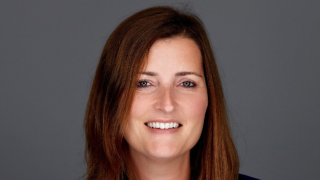The trial has been ongoing since March, taking place at the Le Vaudreuil factory and aims to use 5G to build reliable, scalable and sustainable connectivity solutions for future industrial needs.
The indoor 5G-enabled trials will support two use cases: augmented reality applied to maintenance technician activities and the implementation of a telepresence robot for remote visits.
Nokia radio AirScale and core equipment was selected and the experimental frequencies were allocated by the French regulatory authority. Five indoor 5G antennas were installed inside a part of the factory, covering close to 2,000 m2 of production space with download speeds beyond 1Gbps, on an experimental network architecture allowing local data processing with edge computing technologies.
Orange suggested the use of the recently launched Dell technologies 5G-ready Latitude 9510 business PC to deliver these use cases.
“5G is a breakthrough technology for businesses that will bring numerous industrial applications, such as predictive maintenance, real-time video processing, augmented reality and telepresence,” said Stéphane Richard, chairman and CEO, Orange.
“These use cases are powerful and competitive levers that will enable the full potential of Industry 4.0. To make the most of this new mobile network, operators, industrial players, public authorities and companies will have to work together.
“At Orange, we believe in a co-construction approach. Our co-innovation with Schneider Electric for the factory of the future is an example of this: We are poised to support our industrial partners in their digitalisation and in the development of solutions that meet their needs.”
In the first use case, the teams connected tablets to 5G using the Schneider Electric augmented reality application called EcoStruxure Augmented Operator Advisor (AOA). This application enables operators to superimpose real-time data and virtual objects onto a cabinet, machine or entire plant. The objective with 5G is to test future functionality with minimum latency and maximum throughput.
The second use case involved driving an AXYN mobile telepresence robot using 5G to eventually arrange remote visits to the Le Vaudreuil site. A remote visit with high-quality video and audio will help minimise travel time and costs as well as reduce the carbon footprint of the user with high level performance.
"The health, economic and climatic challenges make digitisation more important than ever for companies,” added Jean-Pascal Tricoire, chairman and CEO of Schneider Electric.
“The pilot conducted with Orange at Le Vaudreuil in a Schneider Electric industrial showcase validates many 5G use cases: augmented reality, remote everywhere, real-time access to data, 5G’s reliability, scalability and durability make it a connectivity solution well adapted to industry 4.0, for greater resilience, competitiveness and sustainability."
The two have said that they will conduct more trials to test technologies with strong potential, such as artificial intelligence, and thanks to future hardware and software updates to the network equipment.






